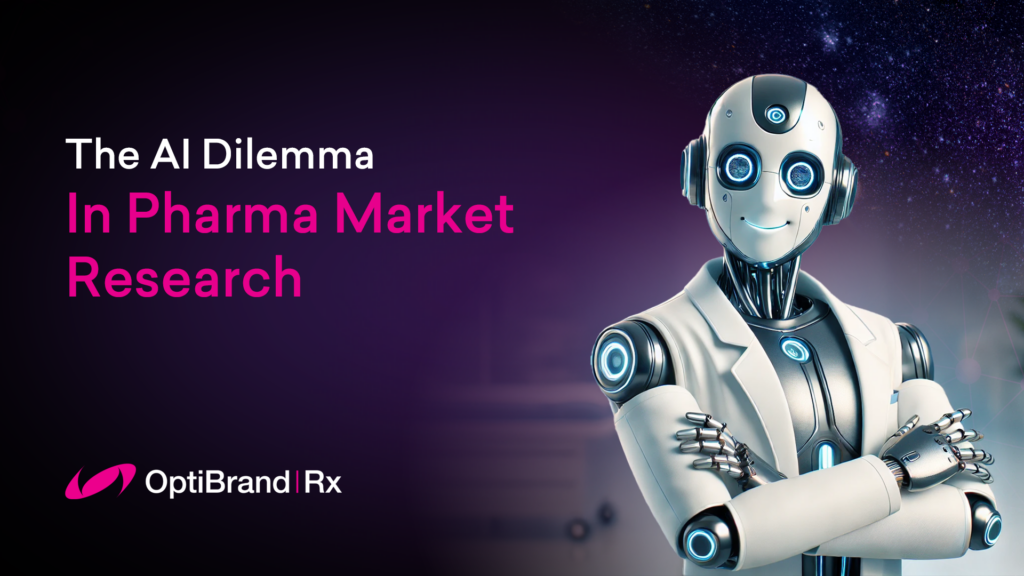
AI is reshaping pharmaceutical market research at a pace few anticipated. Once a niche tool for streamlining surveys, it has evolved into a powerful force capable of predictive analytics, sentiment tracking, and real-time insight generation.
But in the race to automate, the industry has overlooked a growing problem—speed is being mistaken for accuracy, and efficiency is coming at the cost of depth.
AI is not the enemy. Nor is it the ultimate solution. It is a tool, and like any tool, its effectiveness depends on how it’s wielded. Used wisely, it amplifies research, delivering sharper insights and more strategic decision-making. Used lazily, it turns into a crutch, producing shallow, biased, and misleading data that misinforms critical business moves.
For pharma companies looking to stay ahead, the question isn’t whether to use AI. It’s how to use it strategically—when to trust it, when to challenge it, and when to override it with human intelligence.
The AI Illusion
At its best, AI has given market research the ability to identify shifts in physician sentiment before they surface in traditional tracking, optimize survey methodologies in real time, and forecast market trends with increasing precision.
At its worst, it has fueled a misplaced confidence in automation, leading to data that lacks strategic depth, incomplete decision-making, and a growing trust in research outputs that fail to capture real market complexities.
Three key failures have emerged:
1. AI Prioritizes Accessibility Over Balance
AI-driven sampling models often default to the most readily available respondents—typically digitally active physicians. While this ensures speed and scalability, it can tilt research toward certain demographics, leaving gaps in insight.
Some brands struggle to engage high-prescribers and KOLs, missing the voices that shape treatment guidelines and market perception. Others find themselves over-relying on KOL perspectives, leading to a disconnect between thought leaders and frontline prescribers.
AI can compile vast datasets, yet risks reinforcing existing blind spots rather than uncovering new insights.
2. AI Can Tell You What’s Happening, But Not Why
Natural language processing (NLP) can scan thousands of physician responses and flag sentiment shifts—but it cannot interpret the underlying drivers of change.
Is a drug’s prescribing decline due to efficacy concerns, market access barriers, or a competitor’s aggressive rebate strategy? AI alone won’t tell you, because context, intent, and industry-specific expertise cannot be inferred by pattern recognition alone. Without human analysis to ask the right follow-up questions and challenge assumptions, decision-makers risk acting on incomplete information.
3. AI-Generated Reports Are Replacing Strategic Thinking
Auto-generated insights often feel conclusive, but without human validation, they are just data, not direction. Many pharma teams now receive AI-driven reports that lack interpretation, narrative context, or clear strategic next steps—forcing decision-makers to piece together meaning on their own. True competitive advantage comes not from data alone, but from the expert interpretation that turns information into action.
The Future of AI in Pharma Market Research
AI isn’t going anywhere—but the way we use it must evolve.
Pharma teams that succeed in the next era of market research will be the ones that:
- Use AI to augment—not replace strategic thinking.
- Interrogate AI-driven findings instead of blindly accepting them.
- Refuse to let speed dictate quality, ensuring that insights are truly actionable.
At OptiBrand Rx, we bridge the gap between data and decision-making. Our approach combines AI-powered analytics with the expertise of seasoned strategists and behavioral analysts to translate insights into meaningful action. We don’t just deliver data—we deliver clarity, context, and a competitive edge.
Get in touch with us to explore how our AI-enhanced strategy solutions can give your team the confidence to make smarter, more effective decisions.
